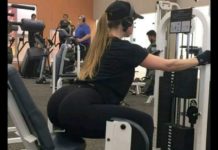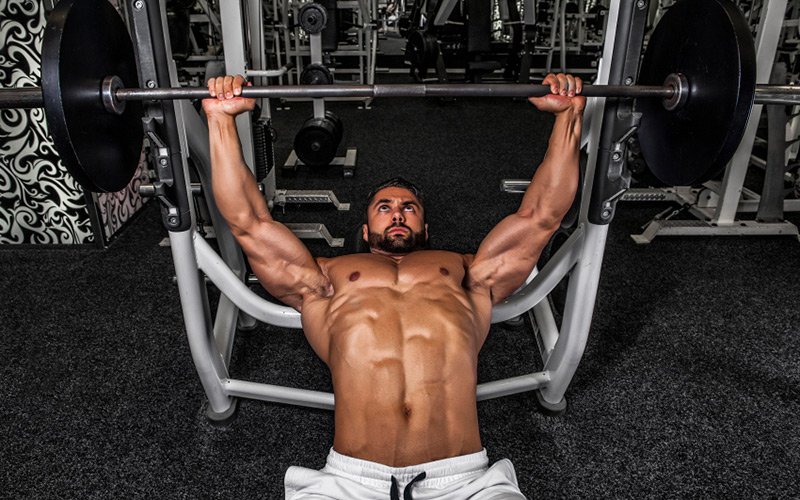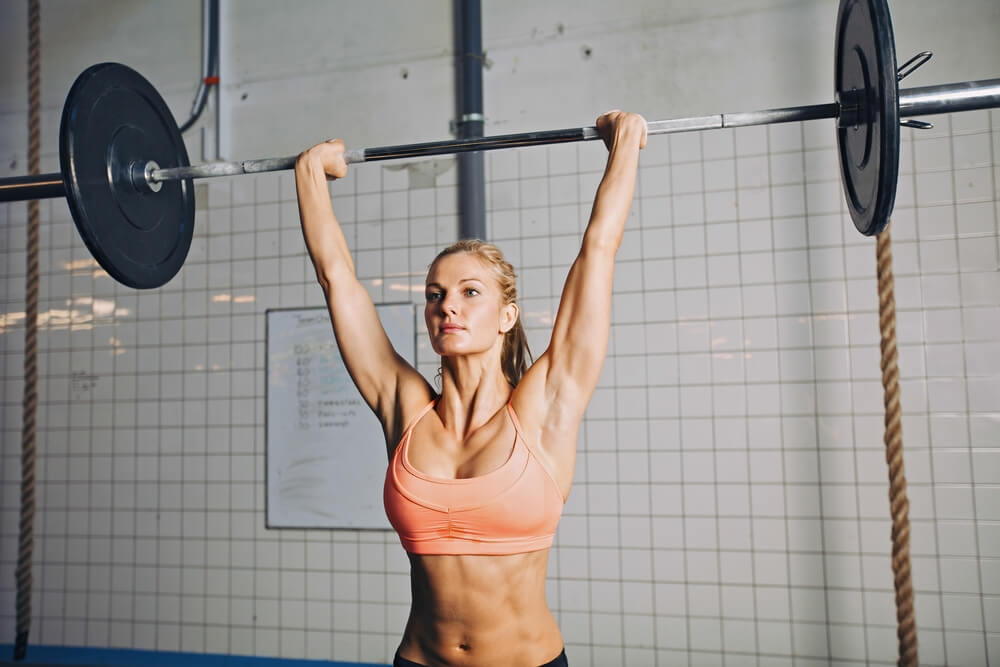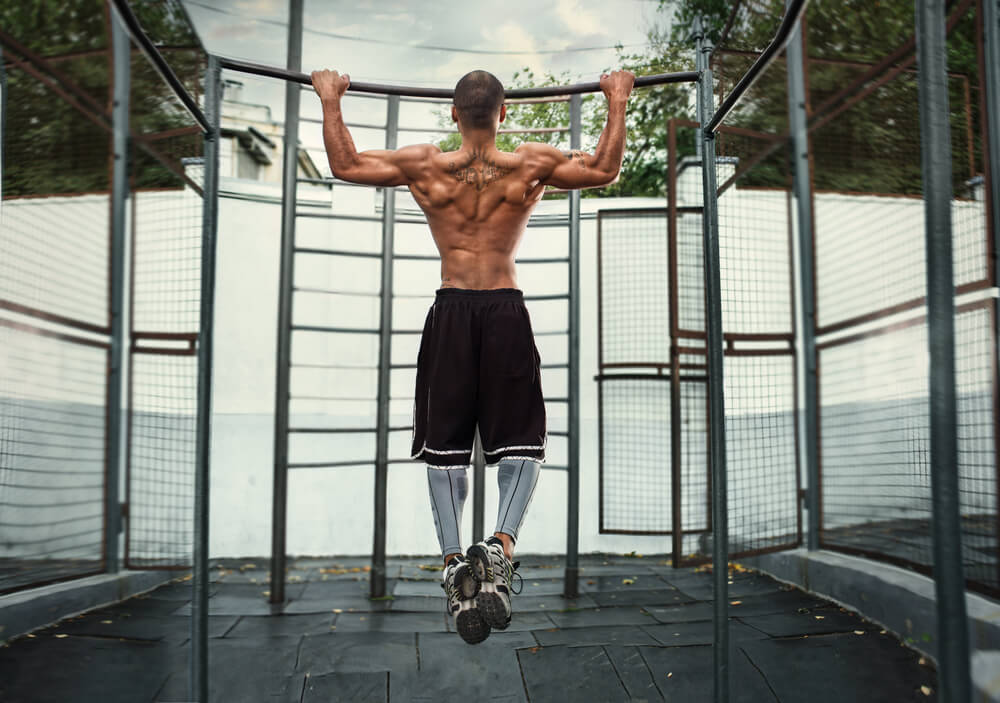
For a full bodyweight squat you want to put your arms straight out in front of you and make sure they are parallel to the ground. Keep your spine in a neutral position during the entire exercise. You do not want to round your back while making sure you do not hyper extend and over accentuate the natural arch of your back. You could strain your back and cause serious injury, especially if you decide to add weights to the squats exercise.
Most of your weight will be on the heels and balls of your feet (imagine you are glued to the ground). To know if you are doing this part of the exercise correctly, you want to make sure you are distributing your weight to the right places. You should be able to wiggle your toes during the entire exercise.
To get the most out of the squat exercise, make sure you are keeping your whole body tight the entire time. Here are a few steps to help us breakdown squats:
- Bend at your hips and push your butt backwards. While your hips continue going backwards make sure your knees begin to bend. It’s important to be conscious about starting with your hips going back and not by bending your knees.
- Keep your back straight and a neutral spine the entire length of your squat. You want to keep your chest and shoulders up. A good way to maintain the correct form, is to look straight ahead and find a spot or object on the wall to concentrate on; this will help with your balance as well.
- Now squat down, focusing on keeping your knees in line with your feet the whole time. You don’t want your knees to start to go over your toes, if they do bring them in but make sure to have your knees no wider than your feet.
- Squat down as far down as you can go while maintaining correct form or until your hip joint is lower than your knees (which would be parallel to the ground.) This part of the exercise you want to be focusing on your hip joint, not your legs. Remember depending on the size of your thighs, your squat may look as if you have reached your uttermost depth. I promise you can go deeper than this. But anything less than parallel is a going to be only a partial squat.
- Once you get to the bottom, it’s time to go back up and repeat. You have completed a full bodyweight squat.
A few tips when doing a full bodyweight squat…
- Keep everything nice and tight, take a deep breath in and breathe out putting your weight and pressure on your heels while keeping the balls of your feet on the ground the whole time.
- If you want to tone your butt, make sure to squeeze your butt when you return to your starting position.
- To get the most out of the squat exercise, keep your body and core tight the entire time. It is very important to get your form down when starting. Especially because you will want to start adding weights to your squats to challenge yourself.
- Do not get discouraged when you first start. Everyone is different, so our squats won’t look exactly the same. For example, someone with a longer femur, will squat slightly different than someone with a shorter femur, starting with their range of motion. So if your squat looks different than the person next to you, it doesn’t mean you are doing it wrong!
- For more information, you can also check out “Do squats really work?”
-Terry Asher
Terry
Latest posts by Terry (see all)
- How Important Are Net Carbs For Building Huge Muscle? - Apr 28, 2017
- The Matt Damon Workout Explained - Apr 27, 2017
- Watercress – Benefits And The Best Way To Consume It - Apr 26, 2017











dude toes are out to much
This squat is wrong. There shoud be very little bend in the back. This picture shows that he has bad hip mobility. Start very light get you exercise right. In the long run you will lift heavier and much better form.
Jake
Nz
Gilberto,
Your toes should be between 30-45 degrees, exactly how they are in the video.
-Vic
I assume that the guy on the picture turned 180 degrees after unracking and stepping back. I assume he turned around for the sake of making more informative video/pictures.
I think readers should be told about this and should be warned not to turn around with heavy weight on their shoulder. because
@ andras You’re absolutely right. We debated for a while how to take pictures of this since if we had him unrack and step backward all the pics would have to be from behind due to the wall being in the way.
Thanks for bringing this up, Ill try to explain it better in the post.
-Vic
I really appreciate the clear and concise explanation you have provided. Keep up the great work.
Hey, would it work to do this practice and the squat in a smith machine?, my gym only got one of these bars so its always a huge line to use them.
and great vids btw 🙂
Mathias, stay away from the Smith machine at all costs!
I wrote a good article, about machines vs freeweights here it will explain why you should use freeweights. http://gymjunkiesmain.wpengine.com/rage-against-the-machines-why-you-should-be-using-freeweights/
[…] How to Squat […]
No doubt about it. Squats and Deads are king.
[…] How to Squat […]
I don’t fully understand this deep squat hype. I’ve heard that deep squat is more harmful to your knees than a half squat(knees at 90 degree angle). I’ve also heard that half squat is better for sprinters, because it’s more of a sprinting like move than a deep squat. My friend told me: “Think of sprinters… do they ever get into a deep position during running in a way that their knees are at 90 degrees or less?” This is at least true if you think of the degrees during touches on the ground.
You should always squat to parallel (or lower) if you don’t have any injury that prevents it.
Doing half/partial squats put your kneee in a bad position and is much harder on your knee than going too deep.
You could ask this question to any top coach or trainer and they would tell you the same thing. Squat DEEP!
[…] Squat […]
Paul is right: Your explanation is clear and concise. No ambiguity.
Recently, in some gym I won’t mention, I asked the instructor monitoring the weight room to look if I had it right.
He told me not to put the weight on heels, rather on the toes. I had doubts, but I remembered your site which I bookmarked.
Too bad they’re appointing people with incomplete knowledge sometimes.
[…] How to Squat […]
To Borje: Sprinting is running and squatting is weight training. One is primarily strength exercise and the other is primarily cardiovascular exercise. You really can not compare the “movements” of one to the other. That would be like trying to compare Beatles to Stones- they are both good even thought they are different. Your sprinting speed can only improve, as will the strength and condition of your entire body, when you do full, strict, progressive resistance barbell squats. If you insist on performing only half-range partial squats then you will have to use more weight which will strain your knees eventually and rob you of the full motion and benefit of real full – range normal squats, not to mention that your gluteus will get almost zero work since your hips must dip below your knee level to activate the hip muscles. Forgive me, but stop making excuses and just start squatting the right way, man! You will be glad you did.
I just started with squats for the first this week after finding this fine website (I was doing single joint stuff before….). I try very hard to have the proper form but I have a question. I think when going down my lower back bends a little bit outwards — so my back is not 100% straight. Is this OK? Should I tilt my upper body more forward to avoid this?
Thanks for these great instructions!
Nice video. My only comment it that you aren’t going deep enough in the squat. Your hip crease isn’t below the knee.
[…] How to Squat […]
Great video and great site. The gym that I am a member of does not have a squat rack. All they have are Smith machines. I would love to change gyms but this gym is inexpensive. I know I shouldn’t do squats on a Smith machine but I have no other choice. I would hate to cut squats out of my routine. Any suggestions?
Sometimes you have to chose the lesser of two evils. No squats or squats with a Smith machine? I’d chose squats with a Smith machine. I’ve actually been in this predicament once before in a hotel fitness room. And I’ll confess, I used the Smith machine.
It’s not ideal. But if it’s all you have, go for it.
I would avoid the Smith Machine at all costs!
Once you are used to bodyweight squats, hold a plate or dumbbells. Once that is easy start working towards single leg squats!
I agree completely. The Smith Machine is crap.
Vic,
After I’ve been doing sqauts for some time, I begin getting sore in the lower back, just above the waist.
I know I’ve got some disc copmression issues there but generally I’m not sore in the lower back until I get into sqauts for a week or two.
Am I doing too much weight or could something else be wrong?
The description your giving does not sound good. I would stay off of squats until the pain subsides. And of course, getting a doctor’s opinion would be a good idea. Then, if you want to return to squats I would try loading from a different position and see if you still have pain. Try front squats with a barbell or even kettlebells and see how that treats you. Train hard, but train safe.
[…] How to Squat […]
Sup,
Man I just want to thank you for all the useful vidoes. Man AJ had some very good points. I use my toes way to much due to the leg press. Sticking the toe up is a sweet key. THANKS AGAIN!
No doubt, AJ knows what the hell he’s talking about. You don’t squat over 1,000 lbs. without knowing a thing or two. 🙂
Vic,
I must say u r doing gr8 job..keep dat going..
I m really taking lots of inspiration form ur videos and try to improvise on my techniques..
Thnx a ton..
[…] you associate the squat with the thought of the professional powerlifter setting 1,000 pounds across his shoulders and […]
[…] Squats – 1 set of 12 repetitions with no barbell and then 3 sets of 12 repetitions with the barbell (no added weights […]
Hey!
I just want to point out another common mistake that I recently found out I was making:
Be sure to have your feet aligned correctly, my work out buddy pointed out that my left foot was a bit further back than my right one, causing me to “twist” on my way up. It didn’t feel like I was but when I corrected myself I noticed a big improvement.
Thanks for the videos Vic, they’re really helpful!
Great tip. Thanks!
so i am a fat arse and need to get in shape. I like your slow approach as I need the lift as much as the physical. However, I am a 36 yo male, 6’2″, 257lbs. i had a discectomy 5 years ago between l5 and s1 in my back. are squats completely out? if so, and I am assume yes, what else can I do? all I have is dumbells and a bench. I also have a stationary bike. i get dissuaded easily because there is just so damn much information out there it seems like most people are guessing.
[…] How to Squat […]
Vic,
do it matter if you cant fully bend all the way down in the beginning?